Basement HIL
The room serves as a delivery hall for ETH. The oversized space offers enough room for large trucks, allowing them to deliver their goods directly to the building.

The long and high corridor reacts strongly to noise. The parallel concrete walls and ceilings absorb almost nothing, resulting in every noise, no matter how quiet, beeing clearly audible even from a distance. The long corridor acts as an amplifier, which, when you are in it, seems to make the noises coming from the adjacent delivery hall almost as loud as your own.

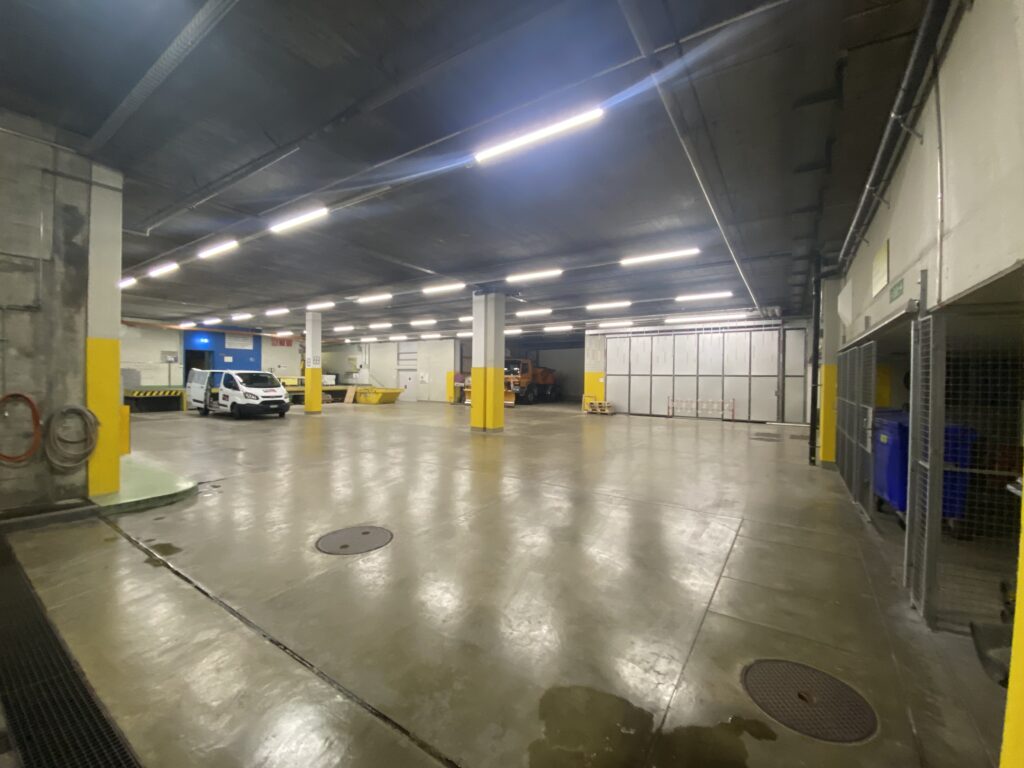
Specific Accoustic Events:
- deep buzzing sounds – probably coming from some technical installation related to the building
- high pitched hissing – probably coming from multiple different noise sources, that combined, due to the high reverberation of the space, result in this unspecific soundscape.
Live – Echoey – Muddy – Reverb-y – Sizzly – Cavernous – Resonant – Noisy – Diffuse – Reflective
Roof Terrace HIL
Besides the centraly aligned building service rooms, the terrace primarily serves as a place for relaxation.
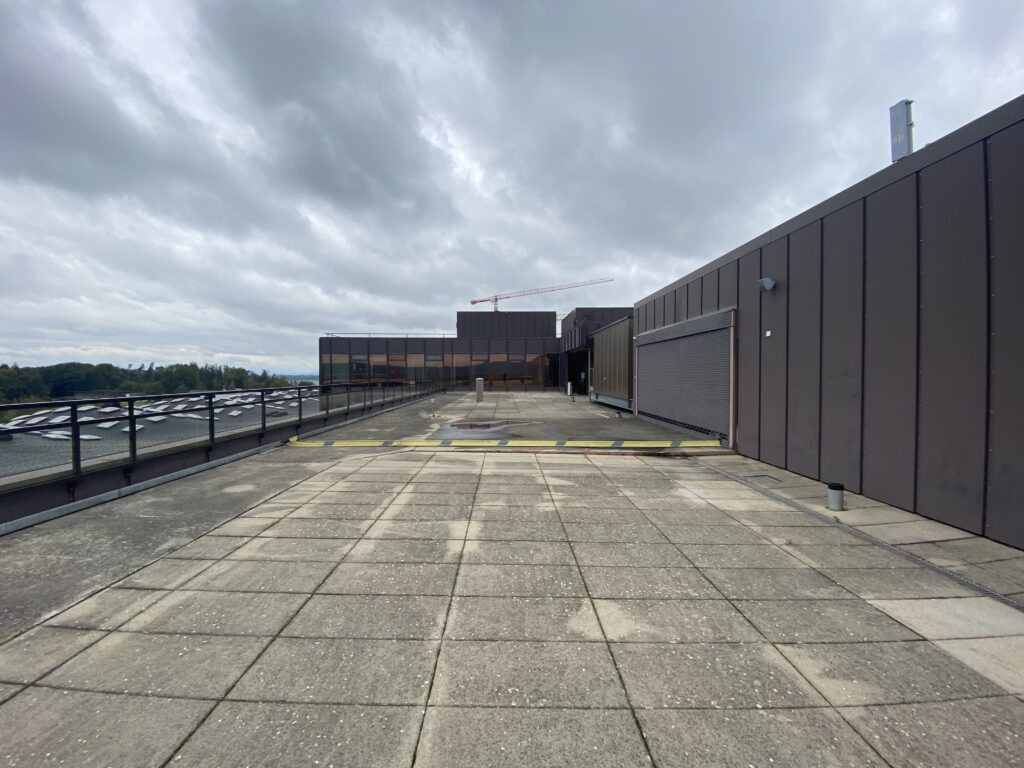
In contrast to the Hall this space only has very little reverberation. But eventhough it is an open space the wall, aswell as the railings, still reflect noise resulting in short and crisp flatter echo.

Specific Accoustic Events:
- insistent rustling – coming from the building ventilation system
- Birds chirping
- Thump, Bang, Clanging – coming from the big construction crater
- homogeneous sizzling noise – cars, wind etc.
Echoey – Open – Silent – Clear
Exploring the Emotional Impact of
Everyday Sounds
Everyday Situations:
In my Room
- natural:
- wind rustling trees
- tree branches knocking on the window
- rain drops rattling on the window
- man-made:
- humming motors of cars and motorcycles
- conversations from outside (open window)
- thumping, clanging, buzzing and more comming from multiple construction sites (even with closed windows)
- clanking of doorhandles
- thumping of closing doors
In front of Alumni HIL
- natural:
- birds chirping
- wind rushing
- man-made:
- humming gas motors and/or whirring electrical motors of buses driving through
- indistinct music
- conversations
- indistinct thumping, clanging, buzzing and more comming from construction sites
- sharp clicking and dull thumping of people walking by
Emotional Impact:
Regarding the two spaces I choose, the specific sounds I could hear were quite similar. Especially interesting was, that there were only a few natural sounds I could perceive in both situations. Most of the soundscape primarily consisted of man-made noise. The difference between the two spaces though was the overall intensity and volume of the sounds.
In my room, the overall soundscape is pretty low in volume. This in turn causes every louder and/or distinct sound to stand out and catch one’s attention. Hence, thumping doors and clanking doorhandles easily disrupt the calm soundscape and one’s emotional state. Almost no noise is overhead, to the point that I even confuse the sound of tree branches knocking on my window, with the sound of my apartment door opening and/or closing. Sometimes I even interpret it as incoming rainfall.
The soundscape in front of Alumni on the other hand, in general, is much more intensive and louder in volume, causing a lot of quiet sounds to disappear. The most emergent sounds are conversations people are having around you and the clicking and thumping of people walking by. The sounds that caught my attention were the buses driving through, as the humming and whirring alerted me to a subconscious feeling of hurry. When most of the people left for their respective lectures, I could suddenly hear the noise of wind and birds, as well as the indistinct thumping, clanging and buzzing coming from the construction site and music playing from one of the coffee vendor vans.
Empirical and numerical estimation of
room acoustic properties
For this excersise I went back to the HIL Basement. Here you can listen to the claps I recorded in the space.
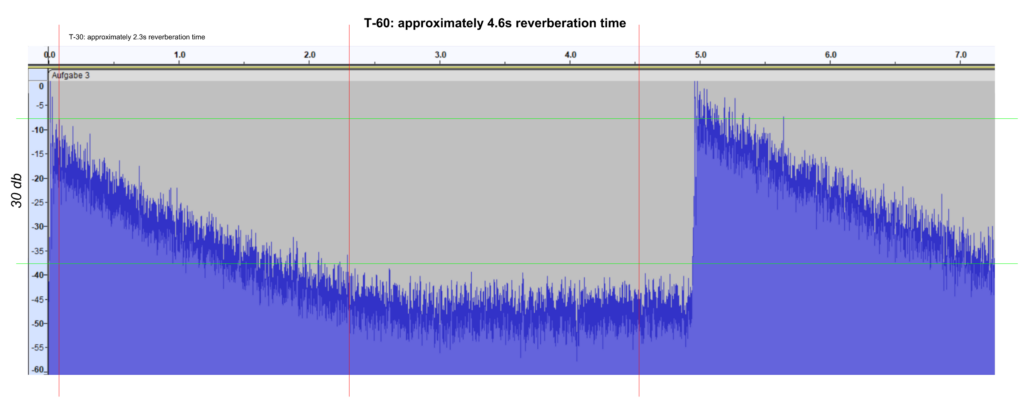
A 30db decrease of the volume of the clap takes roughly about 2,3 Seconds. Hence, T-60 has a reverberation time of approximately 4,6s.

Using the Sarooma WebTool I get Values of 4,2s at 500Hz and 4,1s at 1000Hz. The measurements of the space and the amount of absorbing surfaces are estimated.
Characterization of room acoustic treatments
Basement HIL
This room practically doesnt have any absorbing elements. It is a huge hall completle constructed out of concrete. The only things that probably absorb a little bit of energy is little piles of cardboard gathered in a corner.
Since the spaces purpose includes a lot of traffic installing further furniture is contraproductive. Nevertheless it could be interesting to introduce acoustical structures, that could acoustically unhinge the two adjacing parts, by redirecting noise to where it comes from, without restricting the usage of the space.
Roof Terrace HIL
This space only offers one absorbing element. Neveretheless its the strongest of them all. The sky. It absorbs all sound, in every frequency.
The special thing about the space is the long parralel korridor created by the railing and the service rooms. Imagining a horizonzical plane – the sound that leaves towards the ground reflects once on each surface on the sides, as well as on the front and back, resulting in distinct echoes.
09 Guest Lecture – Landscape acoustics
Next to the big hallway and truck delivery infrastructure, the HIL basement also houses recycling containers for different disposable materials. The sonic objects I choose were two glass bottles. Since glass was stored in an open container, it produced a lot of noise when moved, especially in this space.
When hit against each other, they produce a sharp and distinct ”ting-ing” noise with a slight decay. Depending on the amount of liquid inside the bottles, the sound can vary in pitch height and decay time.
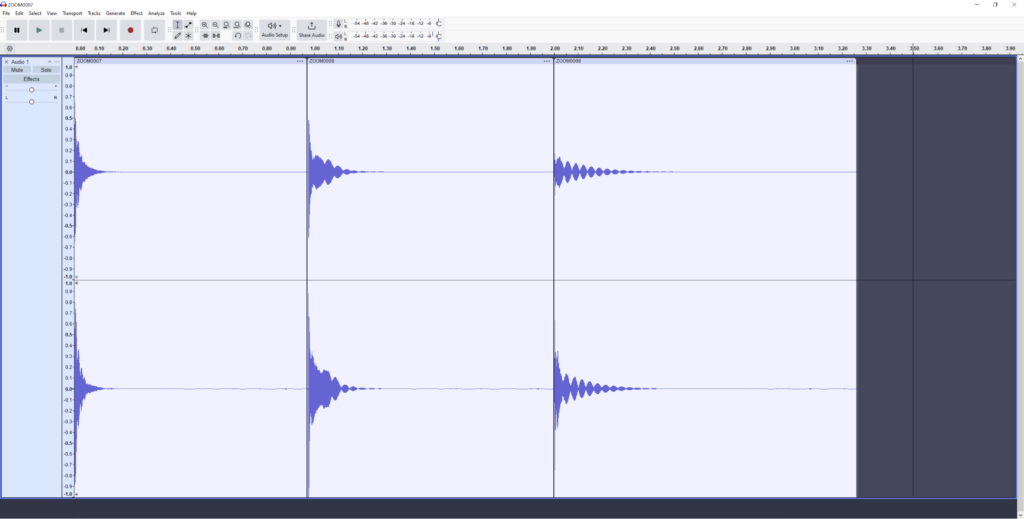
empty
half
full
all together
Final Project – my bedroom studio
The goal of this project is to get an idea of how the sound profile of my own room interacts with the sounds being produced inside of it. Using the tools we were introduced to in this course, I can measure, as well as simulate, the reverberation times of the space.
Furthermore, I will try to reduce the reverberation times by adding more absorption, in order to get closer to an own set goal of about 0.4 seconds reverberation time (T-30) across all frequency bands, giving me an idea of what would need to be done, in order to get closer to standard reverberation times in modern mixing studios.
Measuring the reverberation time with a microphone
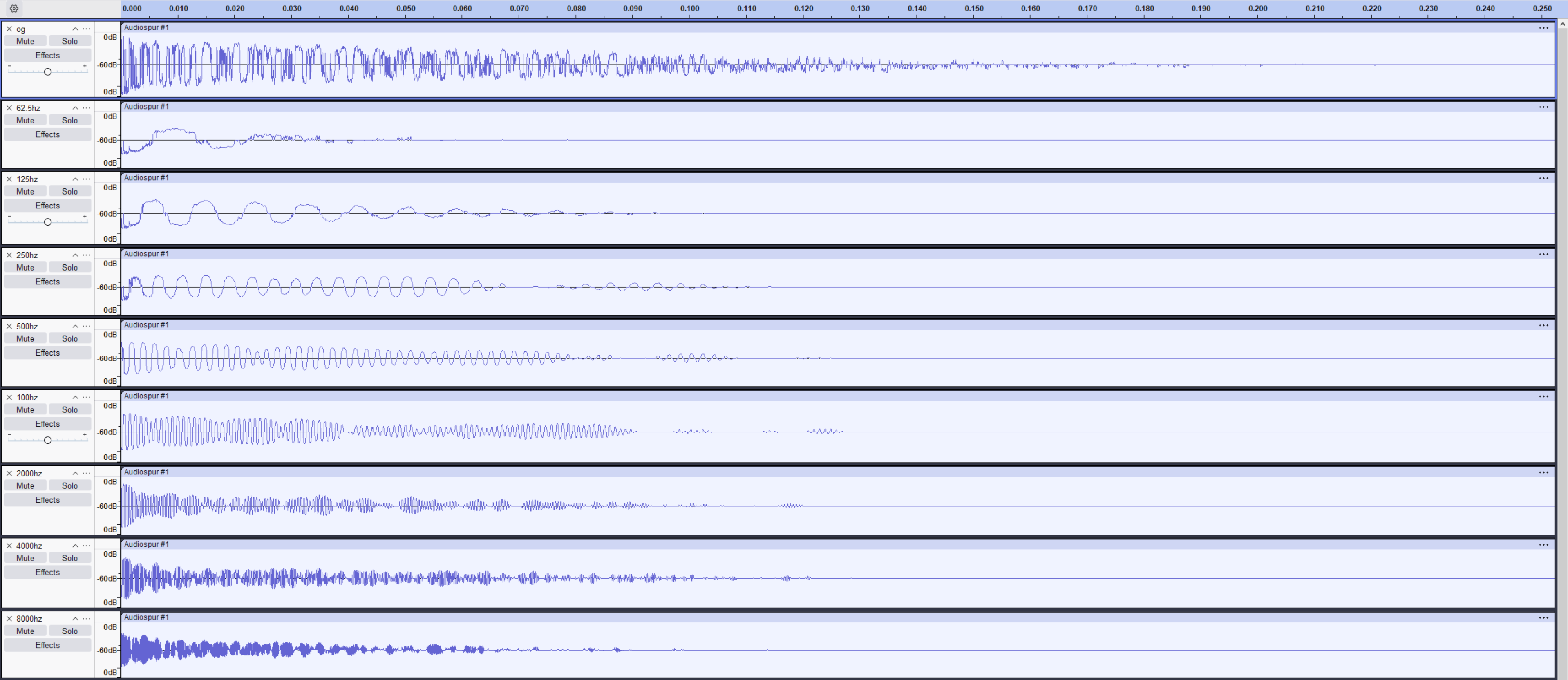
Looking at the wave profile of a recorded sound in audacity – in this case popping a balloon – The time it takes for the sound to disappear is about 0.19 seconds. When splitting this sound up into its different band frequency parts you can see that the energy of the frequencies around 1000hz remains in the room the longest.
Simulating the reverberation time with pachyderm
In order to simulate the reverberation time of my room, I built a representing 3D model in rhino.

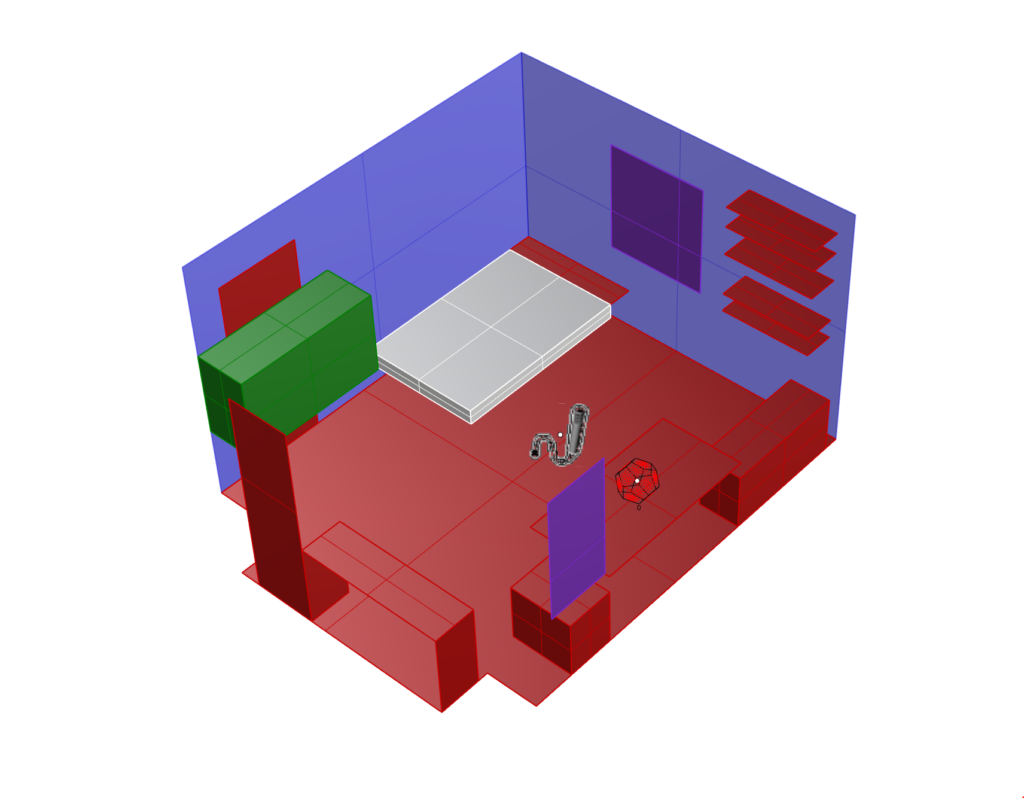
All objects are simplified to single surfaces or boxes, in order to keep the computing task simple. Then, according to the object’s material, I assigned them to their corresponding absorption values. Blue represents concrete, purple – glass, red – wood, green – clothing rack, white – absorbing foam (bed). The values for the bed and the clothing rack had to be roughly estimated, as there were no reference values available anywhere.
As a rule of thumb: To absorb 100% of sound in a certain frequency, the material must be as thick as 1/4 of the frequency’s length (peak to peak/ low to low).
Thus, the 15cm thick foam starts absorbing frequencies around 550hz. The 40cm thick, densely filled clothing rack will start absorbing frequencies at about 200hz
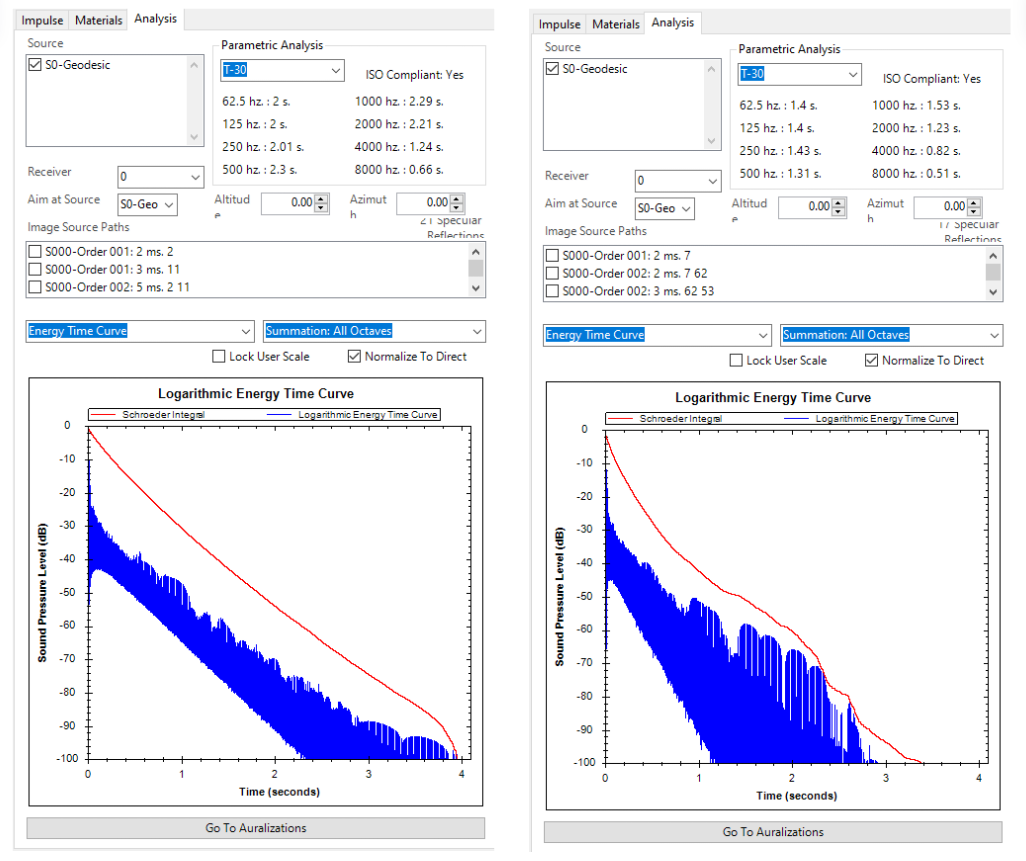
Applying these values already significantly reduces the reverberation time compared to the empty space. Nevertheless, the values are not sufficient. Compared to my measurements made with a microphone the results are fairly similar. Also in the simulation, the longest remaining frequency is the one at a 1000hz.

According to the simulations, I placed acoustic panels at every position where the first reflection hits, to reduce the reverberation time efficiently. Their absorption coefficients match with the 40mm foam illustrated in the image below.
Absorbing low frequencies

As already mentioned previously and as seen in the diagram above, even professional materials can’t absorb low frequencies effectively, while remaining in reasonable dimensions. Instead of single material panels, acoustic modules with multiple components serve as a great alternative to absorb low frequencies efficiently compared to their size.
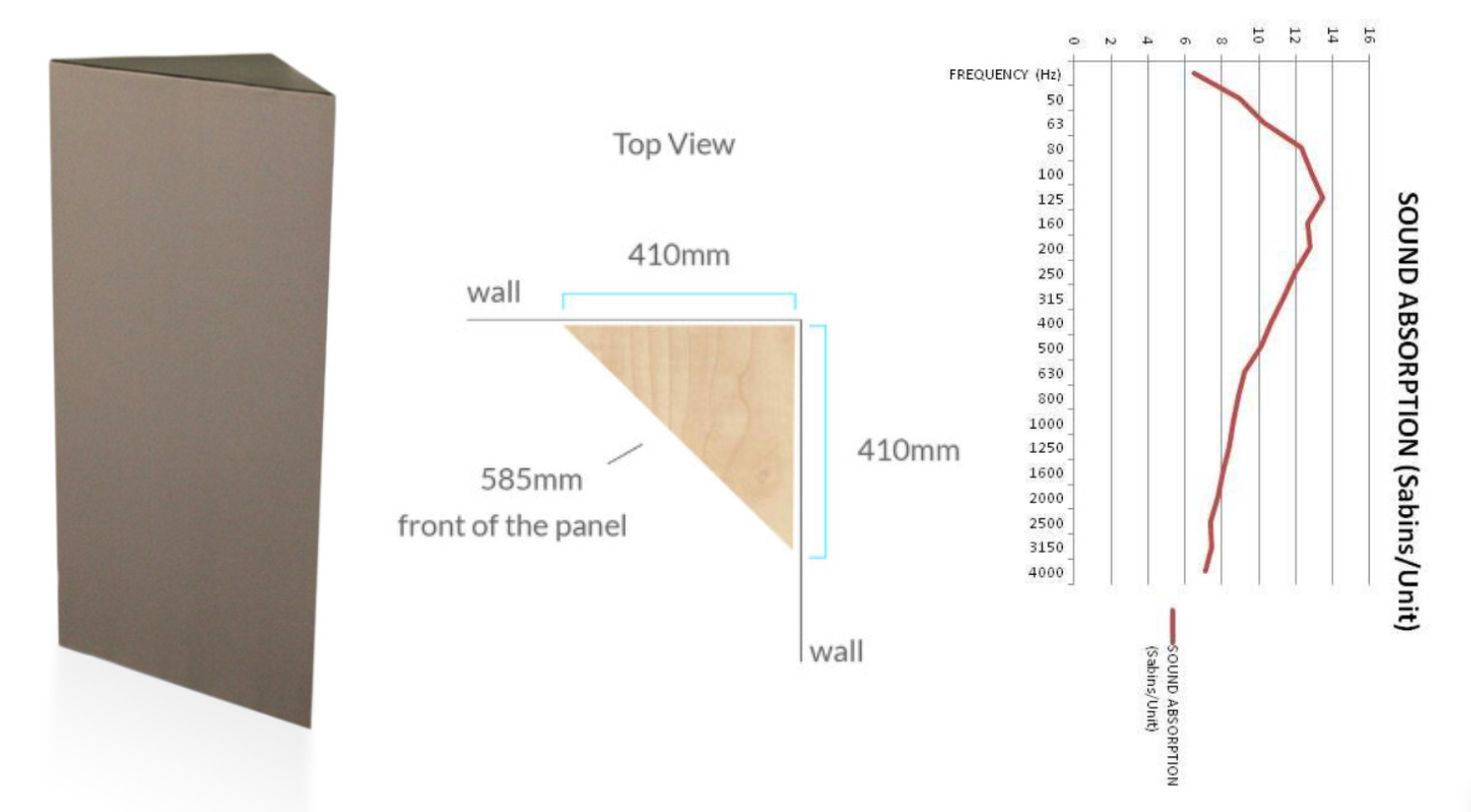
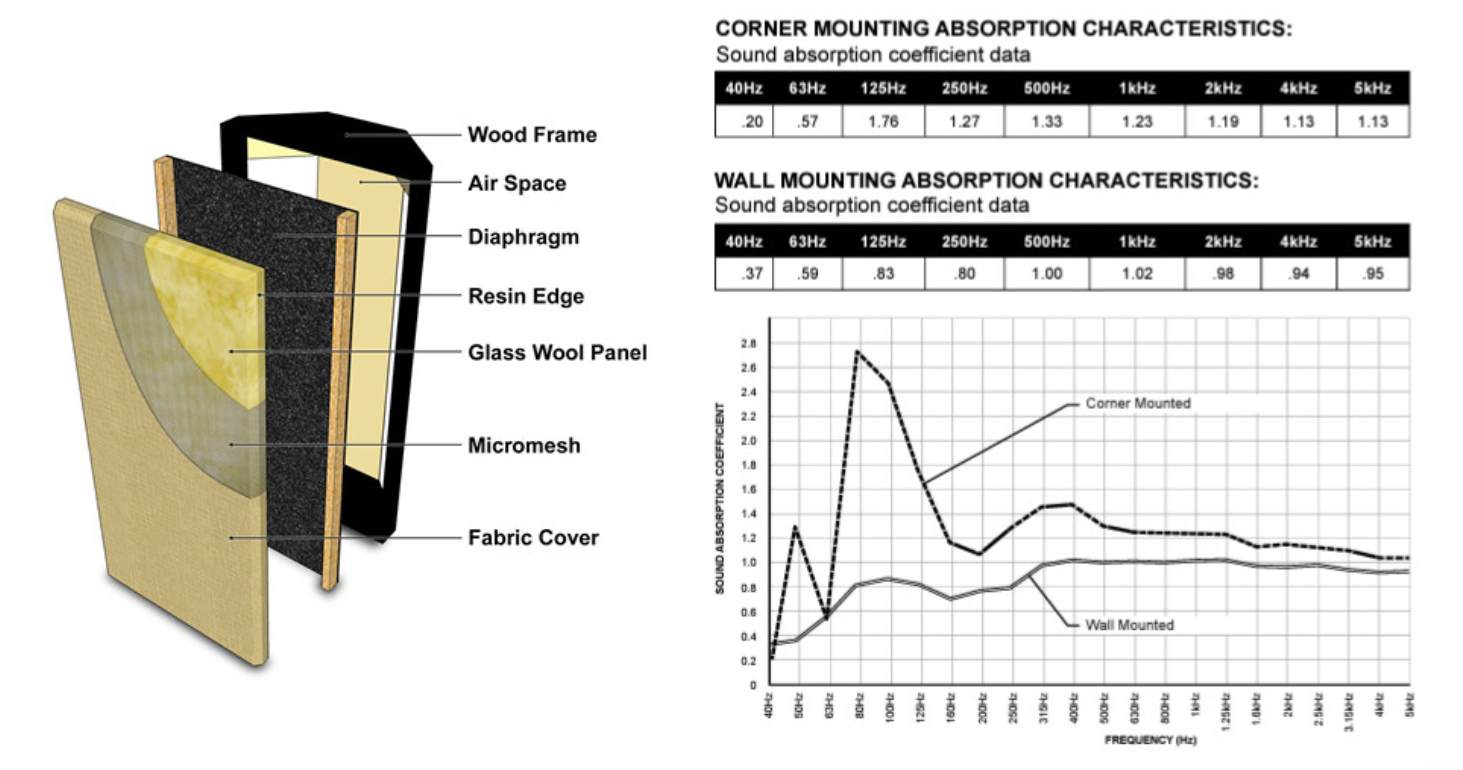

These boxes are most efficiently placed in the corner of a room. The wavelengths that are bigger than the room they’re emitted in produce standing waves at the boundaries of that room, and thus produce a pressure build-up at the corners.

Combining the absorber panels and the TriTrap corner boxes in each corner, I managed to get a pretty good result with most of the values being very close to each other and under 0.4 seconds
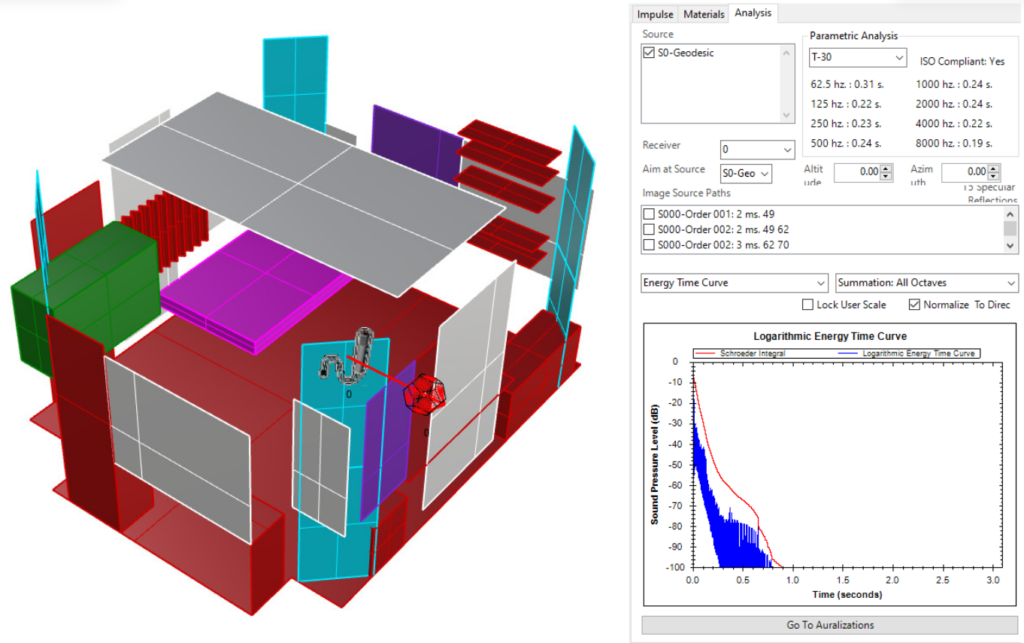
Combining the absorber panels and the MaxTrap corner boxes, the lowest frequency bands reverberation time can even be reduced by another 0.1 seconds.
Conclusion
To conclude, there would need to be a great effort, both practically and financially, in order to transform the room into a room with a mixing studios quality, as low frequencies need special treatment and solutions. Furthermore with the simulation results of the scenario where only the absorbing panels were mounted, an almost equal amount of absorption can be achieved over all frequencies, that is only about 0.1 seconds longer, than the ones that use both the panels ande the corner bass traps. Hence this option would be the most convincing, especially when thinking about financial reasons.



